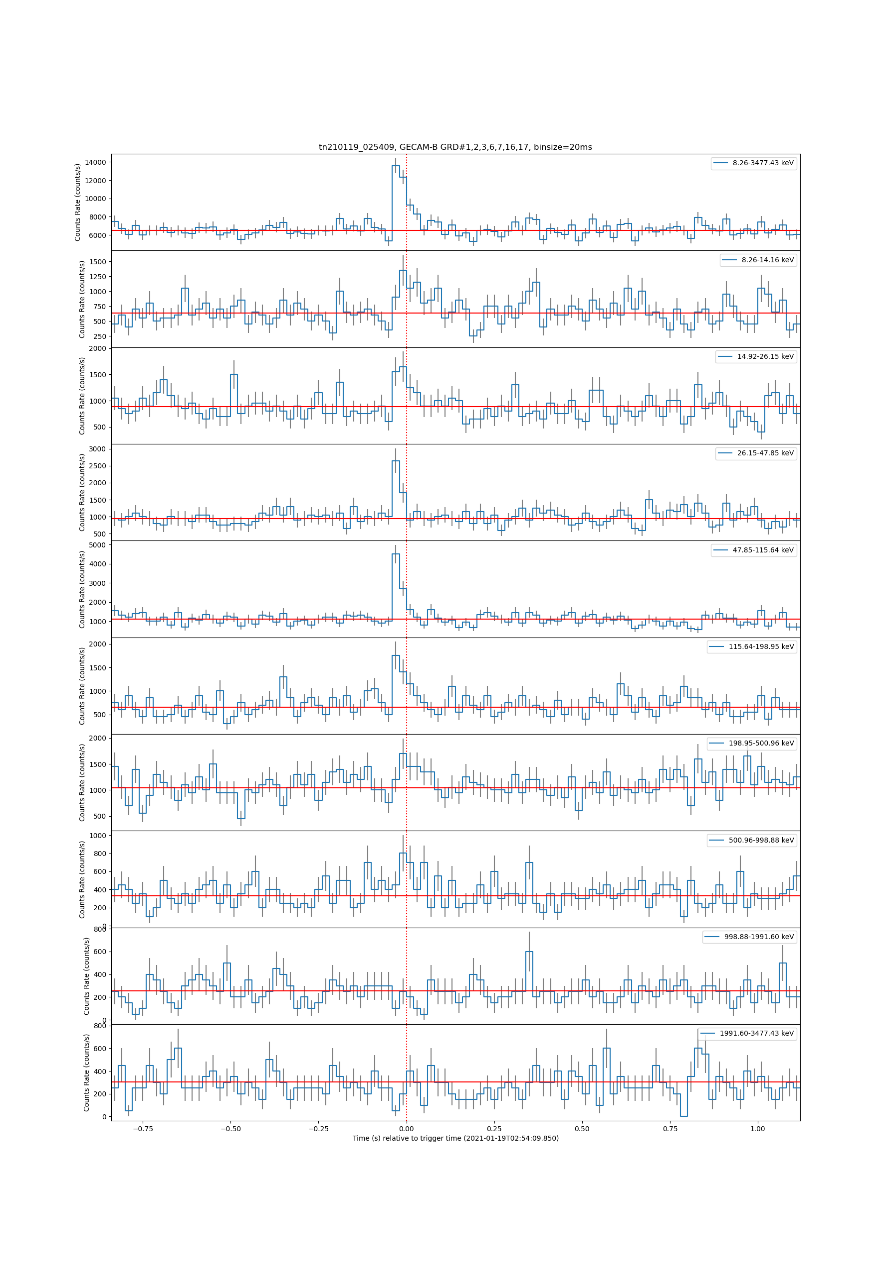Highlights/News
First Data Release from GECAM Mission
2022-12-12
On Dec. 10, the second anniversary of the successful launch of the Gravitational wave high-energy Electromagnetic Counterpart All-sky Monitor (GECAM), the first GECAM data release (DR1) was announced by the Institute of High Energy Physics (IHEP) of the Chinese Academy of Sciences (CAS), the National Space Science Center (NSSC) of CAS, the National High Energy Physics Data Center (NHEPDC), and the National Space Science Data Center (NSSDC). DR1 contains a catalogue of 75 gamma ray bursts (GRBs) and detailed observational data that support scientific users conducting multi-wavelength and multi-messenger observations of GRBs. Following its footprint of releasing real-time burst messages, GECAM is advancing towards its second milestone of providing scientific services for all scientists.
GECAM is a dedicated gamma-ray all-sky monitor composed of two satellites. The primary scientific goal is to find and monitor gamma radiation from gravitational wave event sources, gamma ray bursts (GRBs), fast radio bursts (FRBs), magnetars, X-ray flashes and a variety of other transient high-energy events. This information will help researchers better understand the formation and evolution of extreme objects in the universe.
GRBs are the most energetic type of electromagnetic explosion known to exist in the universe. They are likely generated when giant stars explode at the end of their lives before collapsing into black holes, or when neutron stars and/or black holes collide. Within seconds, these explosions release as much energy as the sun will emit during its entire 10-billion-year lifetime.
Since its launch, GECAM has made significant progress. As of November 2022, GECAM had detected more than 1600 trigger events in total, including more than 100 GRBs, hundreds of magnetar bursts, solar bursts and terrestrial gamma-ray flashes. In addition, the GECAM team has released 91 Gamma-ray Coordination Network (GCN) circulars and more than 600 alerts. It has also coordinated follow-up and multi-wavelength observations between domestic and international telescopes. On Oct. 9, HEBS/GECAM-C, on board the space advanced technology demonstration satellite (SATech-01), detected the brightest GRB (GRB 2210009A) ever detected in the universe. On Oct. 14, it again detected a high energy counterpart of a FRB from SGR J1935+2154, which is the second case in the FRB field.
Following its in-orbit performance and data policy, GECAM DR1 is based on observations collected from January 2021 to May 2022. It contains a catalogue of 75 GRBs along with GECAMTools software. In addition, innovative science products have been designed and produced to make full use of the high time resolution and efficiently distinguish and study a variety of high-energy bursts.
GECAM is the first Mission of Opportunity approved by the Strategic Priority Research Program of CAS. IHEP is responsible for the proposal of project concepts and the development, construction and operation of the payload and scientific ground system. The NSSC is responsible for the development, construction and operation of the ground support system. The Innovation Academy for Microsatellites of CAS is responsible for the development of the satellite system. The NHEPDC and NSSDC are responsible for the data release.
Contact Information
Mr. GUO Lijun
ljguo@ihep.ac.cn

